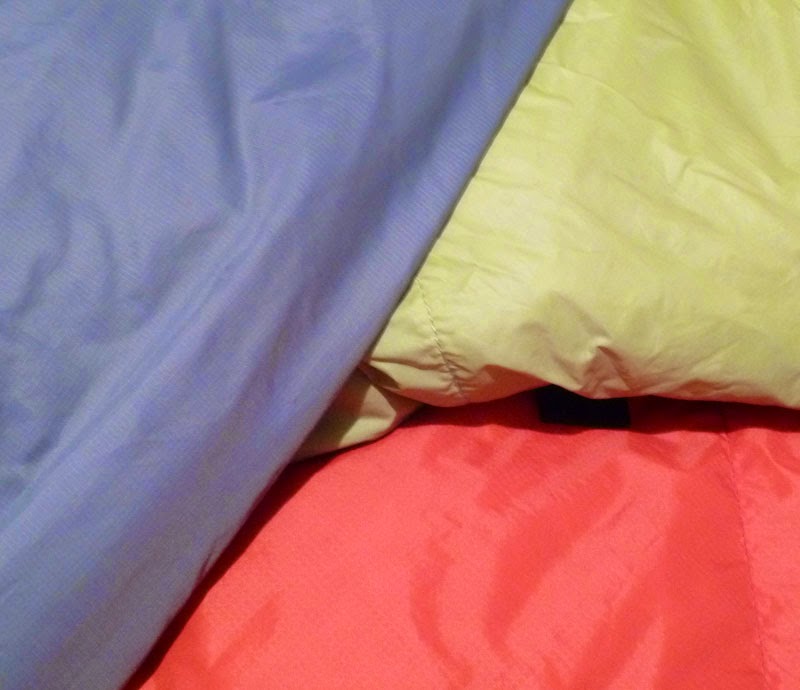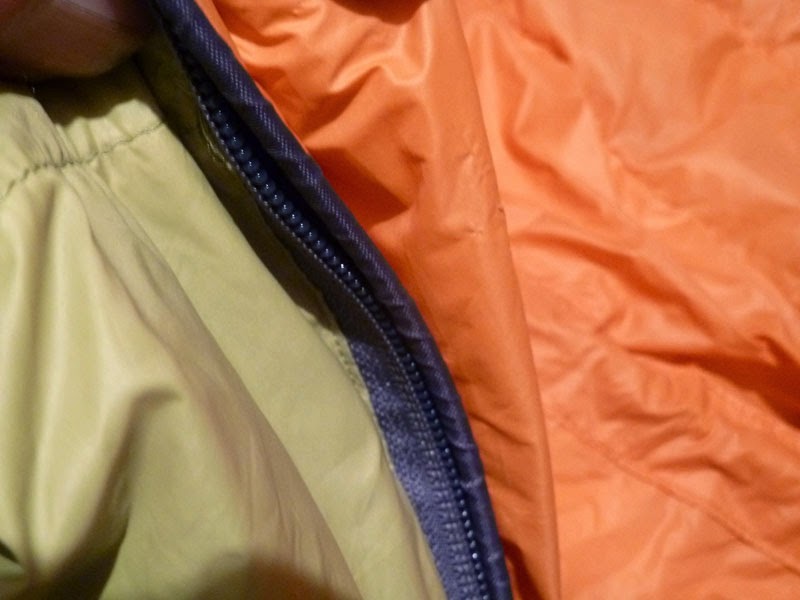A sleeping bag is probably the most important piece of ‘bikepacking’ kit you’re likely to buy and aside from a bike can easily represent the biggest single outlay on gear you’ll make. With every item of kit you’re likely to buy, there’s usually a number of makes and models to choose from and it’s the same with sleeping bags … just more so. There’s an almost infinite number of sleeping bags available, they range in price from a few quid to over £1000, some will keep you warm in the harshest environments on earth, while others would struggle on a balmy night in the Bahamas … thankfully, neither of those is likely to be much use to us.
Selecting a bag for general UK use is actually quite difficult because we don’t tend to have much in the way of ‘general’ when it comes to weather. Our changeable climate means an overnight temperature range that can vary wildly throughout the year, it could quite easily be as much as 30°C over a full 12 months … or 12 hours in parts of Scotland. Spending a night cold, awake and shivering is miserable, the thought of spending a second night cold, awake and shivering is nearly as bad as actually doing it, so buying the ‘right’ bag should be near the top on your ‘things to get right’ list . With such a high number of possible options, it’s no real surprise that there’s also a lot of varied opinions on the subject of which or what type of bag is best. In reality, there isn’t a ‘best’ sleeping bag as peoples priorities will be different but with a little bit of forethought you can avoid costly mistakes and remain warm and snug most of the year.
 |
| All you need to know. |
Insulation.
Considering the bewildering number of sleeping bags, it’s almost surprising that they all use one type of insulation or another … either down, synthetic or maybe even a mixture. Both types of insulation have their strengths and weaknesses and both have their exponents, however, manufactures have really started to step up their game over the last couple of years and down is gaining more synthetic like properties and vice versa. All insulation, regardless of type is there to perform one job and that job is to trap as much air as possible and then prevent that air from moving about … it’s the trapped air that keeps you warm, not the insulation itself.
Down.
The simple fact is this, weight for weight quality down is the most efficient insulator there is. Another fact about down is that it’s expensive. Luckily, these two traits rub along quite nicely together, while down may be costly, the high thermal efficiency means that you don’t require lots of it to keep you warm. The manufacturers of down bags usually like to tell you just how much insulation they’ve stuffed into your bag and also what ‘quality’ that stuffing is … sadly, the same information for synthetic bags isn’t generally. When it comes to choosing a down bag, one of the things we’d like is loft, lots and lots of loft. The more your bag ‘puffs up’ the more air it’s able to trap and the warmer you’ll be. One way of gaining more loft is to use down with a higher fill power, simply think of it as the downs ability to ‘fluff up’. Unfortunately, there are a couple of different standards in use to measure it which can make comparing one bag against another a little awkward but in all cases, the higher the number the ‘fluffier’ the down. Another factor to consider is the ratio of actual down to that of feathers, again this is expressed in numbers, so 80/20 is 80% down and 20% feathers, 95/5 is 95% down and only 5% feathers … we’d like the first number to be as high as possible. So, lets imagine you’re looking at two different bags, the labels state that they both contain 300g of down but one label says 85/15 550fp and the other 90/10 700fp. If the shell fabrics are the same and they both have like for like zips, etc, then they should weigh very similar amounts but the second bag will keep you noticeably warmer as the mercury starts falling. The other obvious way of increasing the ‘warmth’ of a down bag is to simply put more down in it … it’s a tactic that’s sometimes employed in cheaper bags but just remember that while more low quality down will equal more warmth, it’ll also equate to a heavier bag.
Synthetic.
Before we go any further, I’d just like to clarify something … synthetic sleeping bags are not warm when they’re wet. This snippet is often banded about by some people and taken as gospel by others. What I hope people actually mean is, synthetic insulation loses less of its insulation properties when wet than down does … It might sound like a similar statement but it’s very different to saying, a synthetic bag is warm when wet! There are lots of different types of synthetic insulation and just like down, they’re not all created equally. Primaloft and Climashield are two well known and respected manufactures who both produce numerous products to suit a variety of uses. Obviously, not all synthetic bags contain Primaloft or Climashield, the majority are stuffed with something else … Pyrotec, Insulite, MTI, ThermalQ, PolarLoft or some other high tech’, warm sounding name. If your synthetic bag’s from the cheaper end of the spectrum, then you may simply find ‘hollow fibre’ on the label. If the amount of synthetic insulation inside a bag is specified, then it’s usually in the form of weight, eg 160g/m, occasionally you’ll also see a reference to the number of layers but it’s not uncommon for there to be no mention of the amount of insulation at all. While synthetic sleeping bags don’t usually get people excited in the way down bags can, they do have some positive attributes … there’s the thermal efficiency when wet thing and the all important cost factor. Realistically, you can expect a quality synthetic bag to cost less than half of an equivalently rated down bag but slightly ironically, that saving comes at a price. Weight and pack size will be considerably bigger, it’s quite rare to find a true two season synthetic bag that weighs less than a kilo, a similar bag stuffed with down could easily weigh half that amount.
Ratings and the human factor.
Most sleeping bags will state three different temperature ratings … a comfort, a lower comfort and an extreme. The first thing to do is disregard the extreme rating, if (by choice) you find yourself inside a sleeping bag and the outside temperature is within 10°C of the extreme rating, then you really have made a stupid error and you really have got a very unpleasant time ahead of you. If you’re female (which is quite different to just being a big girl) or generally ‘sleep cold’ (which is quite often mistaken for just being a big girl) then you might also want to ignore the lower comfort rating. Temperature ratings should really be re-named and called temperature guides because in reality that’s what they are. The figures may have been calculated by people in laboratories but they weren’t tested on you. There’s multiple factors that really need to be taken into account in order to determine how accurate the rating is on any given day … prior physical exertion, hydration, food intake, etc all play a part in how warm you’ll be. The lab’ test subjects won’t have just ridden 40 miles in the rain on nothing more than half a Mars bar, where as you might have.
 |
| Summer, Winter and never again. |
Yeah, yeah, yeah, all very interesting but what bag should I buy?
When it comes to down, my own personal guide is based on the amount of fill (650fp – 700fp) and it goes something like this – below 200g is summer only and by summer I do actually mean summer. 200g to 350g will generally suffice from the middle of spring until September as long as we don’t encounter any freak weather. Between 350g and 500g could be termed as a 9 month bag but if it’s nearer 350g then it might need supplementing with a jacket for a couple of those months. 500g to 800g is where I start to consider a bag’s potentially suitable for year round UK use but again additional clothing may be required. Above 800g is often too warm for anything but the coldest of nights, it’s a nice thing to have but probably won’t get used much.
The above is based purely on my own experiences – both pleasant and otherwise, you may find you’re requirements are similar or you might not. There’s a substantial amount of leeway in those figures and as I said before, your physical state will play a major part in determining their accuracy. I’d suggest that if you only want to buy one down sleeping bag, that you veer towards more down rather than less. If you’re considering going the synthetic route, then I’m afraid that due to the amount of variables you’ll have to rely a little more on the manufacturers suggested ratings … sorry but that’s just how it is.
 |
| Down filled zip baffle … keeps the draughts out. |
While it’s obvious that both the quality and amount of insulation play a leading role in determining how warm a sleeping bag is, you shouldn’t overlook the design of the bag either. Things like, baffles on the chest and over the zip, hood design, bag size and type of construction will all make a noticeable difference to how efficiently the insulation within works. It’s not uncommon for manufacturers to omit certain elements in an effort to grab your attention with a very low weight, astonishingly small pack size or low price … it doesn’t make the sleeping bag bad (you could forgo a zip baffle with no ill effects, if you didn’t bother fitting a zip) but just be aware that in some cases, you may be sacrificing precious warmth for what in the great scheme of things, is actually a fairly insignificant reduction in weight.
Really, this post has just skimmed the surface, there’s so much more that could be said but hopefully, it’s got you thinking enough to engage brain before emptying wallet … maybe I’ll write a book.
